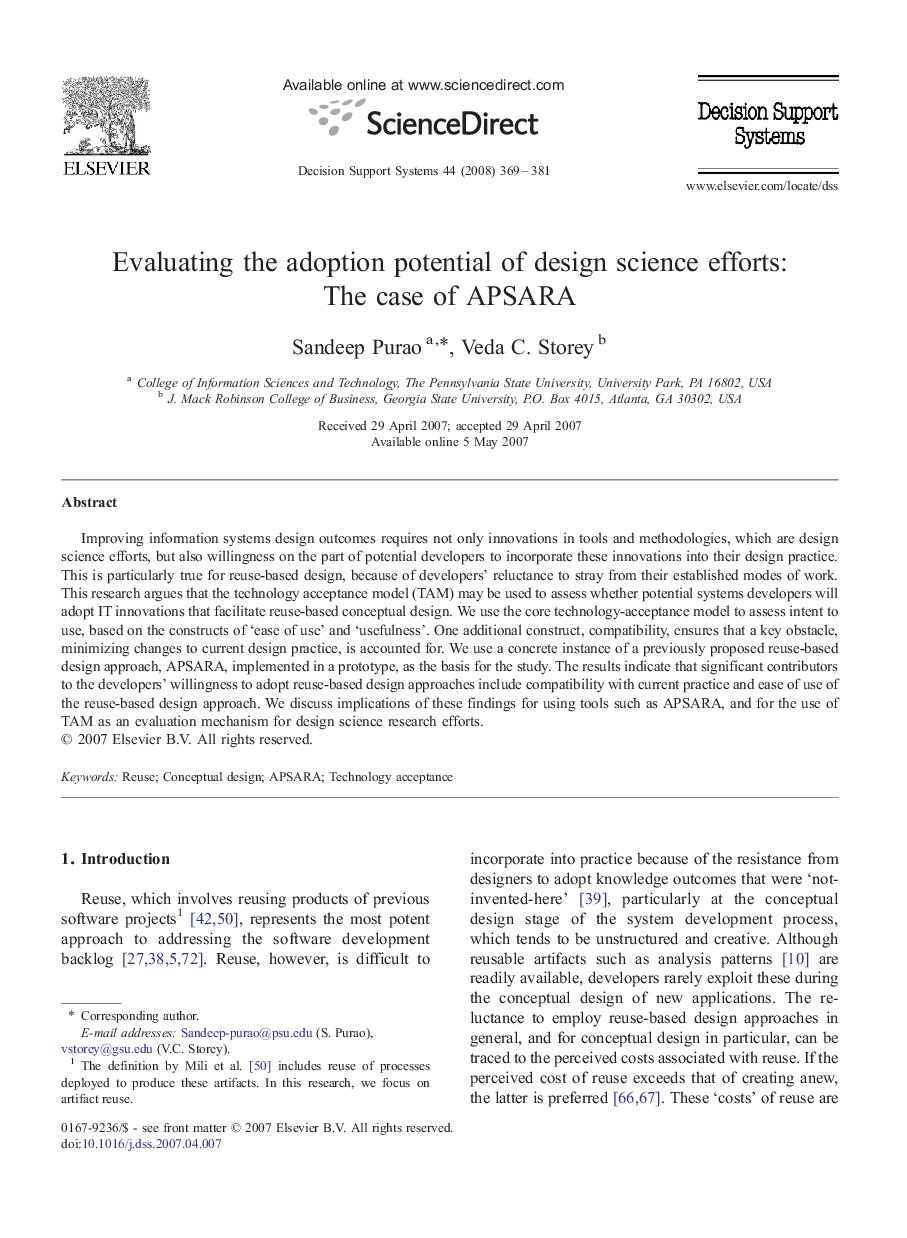| Article ID | Journal | Published Year | Pages | File Type |
|---|---|---|---|---|
| 552540 | Decision Support Systems | 2008 | 13 Pages |
Improving information systems design outcomes requires not only innovations in tools and methodologies, which are design science efforts, but also willingness on the part of potential developers to incorporate these innovations into their design practice. This is particularly true for reuse-based design, because of developers' reluctance to stray from their established modes of work. This research argues that the technology acceptance model (TAM) may be used to assess whether potential systems developers will adopt IT innovations that facilitate reuse-based conceptual design. We use the core technology-acceptance model to assess intent to use, based on the constructs of ‘ease of use’ and ‘usefulness’. One additional construct, compatibility, ensures that a key obstacle, minimizing changes to current design practice, is accounted for. We use a concrete instance of a previously proposed reuse-based design approach, APSARA, implemented in a prototype, as the basis for the study. The results indicate that significant contributors to the developers' willingness to adopt reuse-based design approaches include compatibility with current practice and ease of use of the reuse-based design approach. We discuss implications of these findings for using tools such as APSARA, and for the use of TAM as an evaluation mechanism for design science research efforts.
